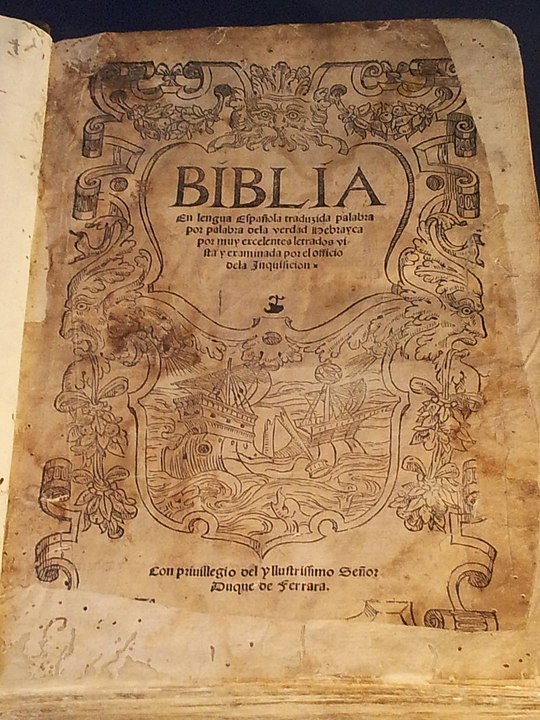The nuances of language are a fascinating topic to explore, a topic that has been discussed in Jewish scholarly works both in the past and in the present. The language of our historic predecessors is something that we explored in our previous Glatt Kosher Holiday cruises, from the Spanish/Ladino of the Sephardi to the Yiddish of the Ashkenazi.
Indeed, The art of language factors into many Jewish literary and religious works, most notably in the printing and reprinting of holy texts. Such was the case with the famous Ferrara Bible.

Ferrara Bible | (c) en.wikipedia.org/wiki/Ferrara_Bible
A Revision in Ferrara
The Ferrara Bible was printed in 1553 in the illustrious city of Ferrara, Italy. Its creation was financed by Yom-Tob ben Levi Athias (who was also its typographer) and translated by Abraham Usque. Abraham Usque was born in Portugal, but fled it in 1543 because of the Portugese Inquisition’s depredations.
In Ferrara, he helped bring about the creation of a revised form of a Judeo-Spanish (Ladino) Bible, with the intent to help Crypto-Jews return to faith, similar to Samuel Usque with his famed prose poem (despite their shared surnames, the familial relations between the two figures is unclear.) The Ferrara Bible had two editions; one dedicated to the Duke Ercole d’Este and published for a Christian audience, and one dedicated to Dona Gracia Nasi, for a Jewish readership.
“Word for Word from Hebrew Truth”
The Ferrara Bible was known for its declaration of translating biblical text word-for-word from the original Hebrew (a declaration found in its full subtitle, Biblia en Lengua Española Traducida Palabra por Palabra de la Verdad Hebrayca por Muy Excelentes Letrados, Vista y Examinada por el Oficio de la Inquisicion. Con Privilegio del Ylustrissimo Señor Duque de Ferrara). Instead of a modern translation of the text, Abraham Usque opted to bring about the essence of the original words by using archaic terms and direct translations, bridging the gap between the intent of ancient teachers and the minds of new readers.
As declared by the bible’s subtitle, this process preserved the original Hebrew truth within the translation, and even after some criticism, the Ferrara Bible influenced many publications after its time. When going on future kosher Europe tours, think about the influence of the languages of antiquity that you’ve heard about, and how they can be understood in the context of modern-day Jewish culture.
